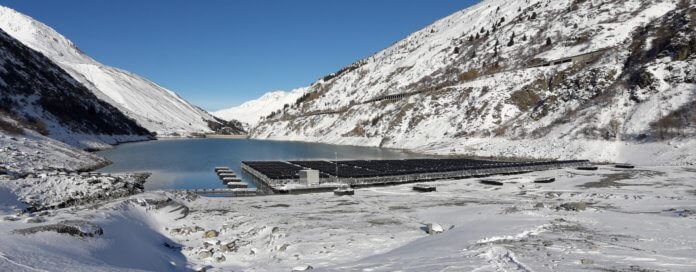Romande Energie and ABB have completed a floating PV installation on the artificial Lac des Toules in Switzerland.
The plant in the Swiss Alps is unique due to its high-altitude location and climatic conditions. However, it has higher-than-average yields even in winter months, when there are extremely low temperatures and low solar irradiation. Yields and efficiency levels are improved because of the use of bifacial modules and the “albedo effect,” whereby the lake and snow’s reflective light is captured by the PV system. This enables the PV plant to continue to operate and produce electricity even when there is snow coverage.
The Lac des Toules project is the latest in a global trend for installing floating PV structures, which offer over 50% more efficiency by using topography and the surrounding natural resources, as well as being driven by a need to source alternative locations for PV systems where onshore land is at a premium.
“We have been working on this project since 2012, so collaborating closely with our partners has been critical. ABB’s capabilities to support above and below the line with a complete technology package – including its PVS-175 string inverters, a transformer station with a dry transformer, and switchgear for medium and low-voltage, advice and counsel – have been critical to achieving and realizing this unique installation,” says Guillaume Fuchs, project lead at Romande Energie.
The 24,000 square-foot solar park consists of bifacial solar models on a carpet of 36 floats, which are secured to the bottom of the lake by weights, allowing it to rise and fall at the same time as the water. The location also means that the floating PV structure and technologies had to withstand winds of up to 75 mph, lake ice thickness of two feet, and the potential to support up to 20 inches of snow.
ABB’s PVS-175 inverters feature anti-corrosion coating that enables the inverters to be installed into both fresh water and salt water applications. The inverters are also able to operate in extreme conditions and temperature variances from -75⁰F and up to 140⁰F.




